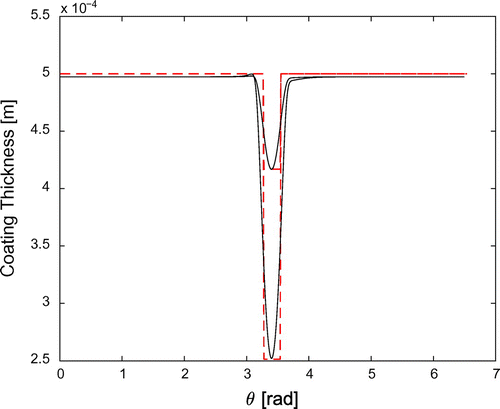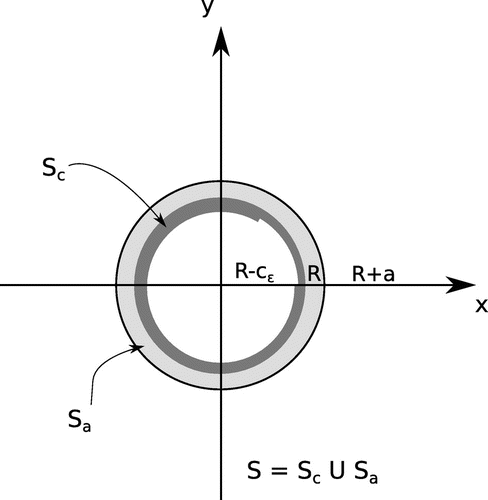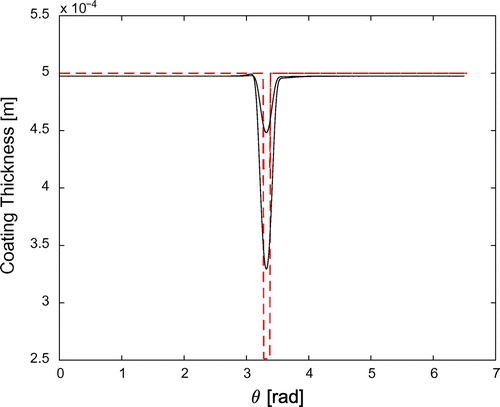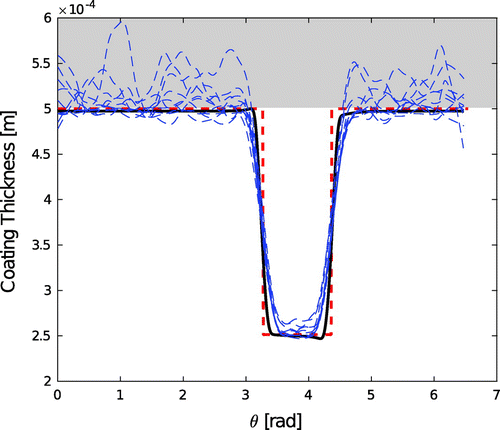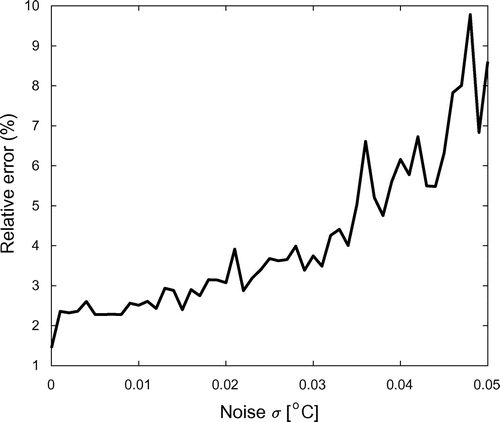Figures & data
Figure 2. Temperature contrast for constant velocity of the defect, at times 100 s (dashed line) and 600 s (solid line).
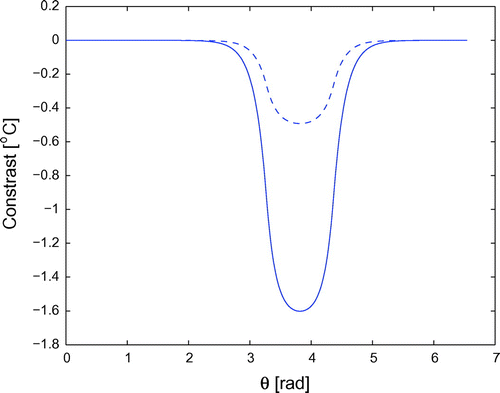
Figure 3. Thickness reconstruction for constant velocity of the defect, at times 100 s (upper lines) and 600 s (lower lines).
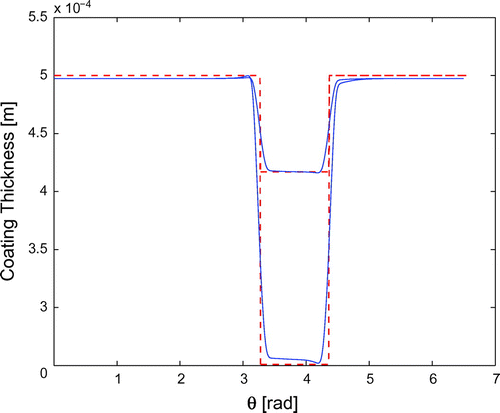
Figure 4. Time behaviour of the defect depth in the case of constant velocity: reconstructed (solid line), true (dashed, red line).
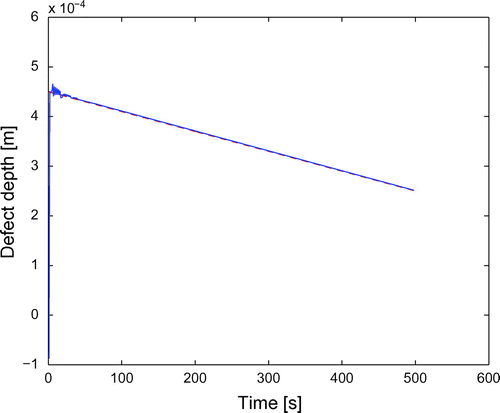
Figure 5. Temperature contrast for linear velocity of the defect, at times 100 s (dashed line) and 600 s (solid line).

Figure 6. Thickness reconstruction for linear velocity of the defect, at times 100 s (upper lines) and 600 s (lower lines).

Figure 7. Time behaviour of the defect depth in the case of linear velocity: reconstructed (solid line), true (dashed, red line).
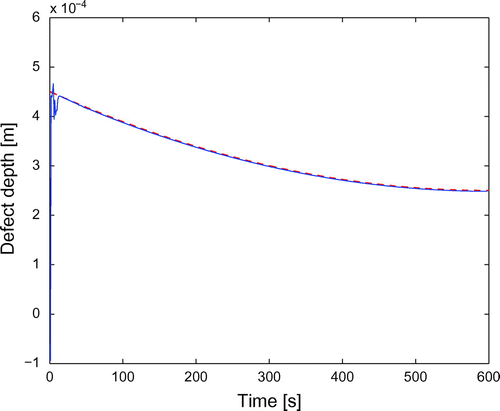
Figure 8. Temperature contrast for sinusoidal velocity of the defect, at times 100 s (dashed line) and 600 s (solid line).
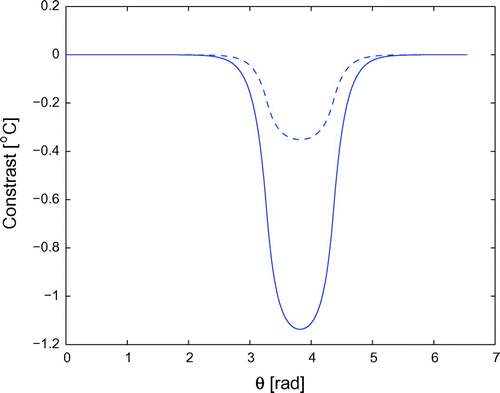
Figure 9. Thickness reconstruction for sinusoidal velocity of the defect, at times 100 s (upper lines) and 600 s (lower lines).
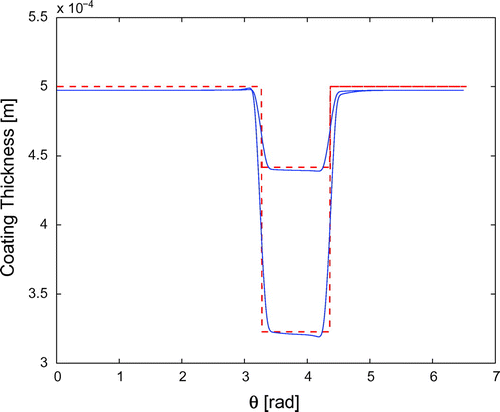
Figure 10. Time behaviour of the defect depth in the case of sinusoidal velocity: reconstructed (solid line), true (dashed, red line).
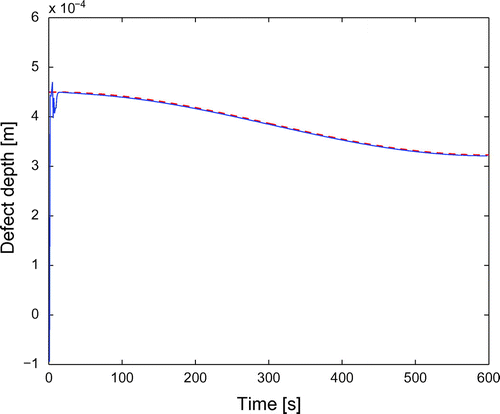
Figure 11. Thickness reconstruction for constant velocity of the defect, at times 100 s (upper lines) and 600 s (lower lines), for an angular extension of .
